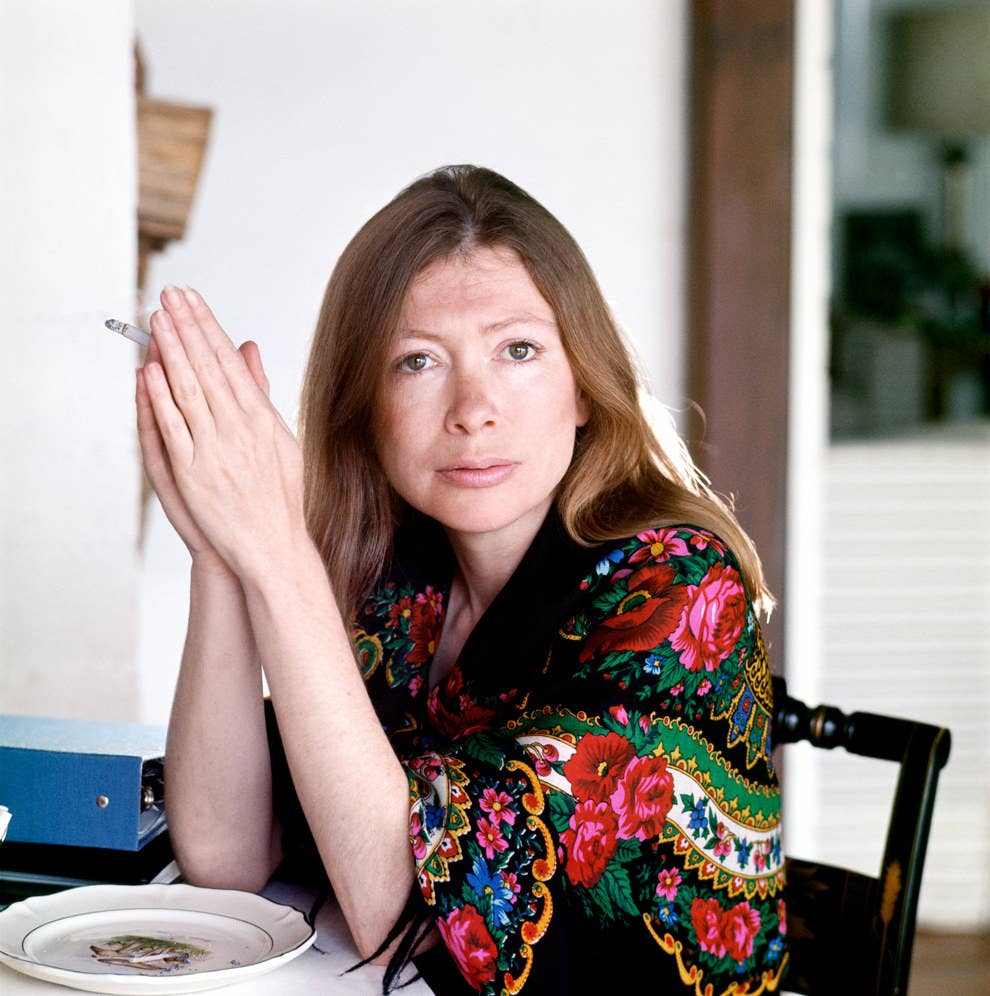
By 1964, just three years after she started writing searching personal essays for Vogue, Joan Didion was plainly itching to write about something other than herself. Her life was also changing. She had published a slim novel, Run River, whose journey to the bookstore had been a grand disappointment. The title had been chosen by the publisher, and the editor had altered the form of the novel entirely, changing its experimental structure into something quite conventional. She had also married John Gregory Dunne, a sometime friend, after he’d supported her through the end of a long love affair. The pair decided to quit their magazine jobs and move to California, where they had a vague plan to make careers in television.
Vogue, apparently unwilling to cut apron strings altogether, asked Didion to begin reviewing films for it. In her opening column for 1964, written just a month before she married, Didion declared her critical approach would be somewhat democratic:
Let me lay it on the line: I like movies, and approach them with a tolerance so fond that it will possibly strike you as simple-minded. To engage my glazed attention a movie need be no classic of its kind, need be neither L’Avventura or Red River, neither Casablanca nor Citizen Kane; I ask only that it have its moments.
She went on to cast positive votes for The Philadelphia Story, The Spirit of St Louis, and Charade. Pauline Kael had not yet quite broken through to mainstream movie reviewing and I Lost It at the Movies hadn’t yet been published, but we can see in Didion’s words a relatively similar approach. She too would spend her career insisting there were moments of brilliance even in what was unquestionably trash.

Didion alternated her assignment on the movies with another writer, which seems to have prevented her from reviewing memorable films. She was trying to write with flair, though, in short spaces, and most of the reviews are sprightly, wisecracking things that seem more like Parker than Didion. She hated The Pink Panther: “possibly the only seduction ever screened (David Niven vs. The Princess) with all the banality of the real thing.” She liked The Unsinkable Molly Brown, but commented that Debbie Reynolds “tends to play these things as if the West was won by jumping up and down and shouting at it.” She confessed a weakness for teenage surfing movies, “an enthusiasm I should try to pass off as sociological.” Like Kael, she too hated The Sound of Music, calling it:
More embarrassing than most, if only because of its suggestion that history need not happen to people like Julie Andrews and Christopher Plummer. Just whistle a happy tune, and leave the Anschluss behind.
Gradually, though, Didion got bored with film reviews. Her review of The Sound of Music was so caustic that Vogue fired her, as she tells it. (This was another connection to Kael, who had been fired for panning the same movie at McCall’s.) In any event, she was moving on to other subjects in a column that she and Dunne soon set up at the Saturday Evening Post.

At the Post, Didion’s writing would undergo a major shift in tone, too. There are hints of the elegiac, distinctive earlier Didion voice in “On Self-Respect,” and in another essay she wrote for Vogue on American summers. But, given the Post’s willingness to send her into the field, she found a groove. It helped that California of the 1960s was fertile ground for twisting stories that provided Didion with the opportunity to follow a disturbing note longer than a column or two. She started off writing for the Post about Helen Gurley Brown (whom she found silly) and John Wayne (whom she did not), but it was the first of the crime pieces that hit a chord with the magazine’s readers — and also reads as the first true Didion piece.
It was titled “How Can I Tell Them There’s Nothing Left?” But the title Didion would give it in her own collection, “Some Dreamers of the Golden Dream,” was the one that would stick. Nominally chronicling a local murder, in which a wife was accused of burning her husband to death in the family car, Didion immediately pulled back to a wide-angle view of everything that was plaguing California, not to mention most of the rest of America:
This is the California where it is easy to Dial-a-Devotion, but hard to buy a book. This is the country in which a belief in the literal interpretation of Genesis has slipped imperceptibly into a belief in the literal interpretation of Double Indemnity, the country of the teased hair and the Capris and the girls for whom all life’s promise comes down to a waltz-length white wedding dress and the birth of a Kimberly or a Sherry or a Debbi and a Tijuana divorce and a return to hairdresser’s school.
The woman was eventually convicted of murdering her husband, but naturally the residents of the San Bernardino valley—the part of California Didion was describing in that long, unwinding opening paragraph—did not take kindly to being characterized this way. “I am worried about Joan Didion,” wrote one Howard B. Weeks, who also listed his profession: vice president for public relations and development at Loma Linda University. “We recognize these feelings as symptoms commonly observed in young New York writers who venture into the Great Unknown beyond the Hudson.” This letter illustrates that Didion hadn’t quite yet broken through to the mainstream; Howard B. Weeks did not know he was lecturing the woman who would become the signature American writer from California on the subject of her own home.
Didion did not slide into her groove immediately. The next piece she wrote seemed almost a step away from anything that could possibly annoy anyone. It was entitled “The Big Rock Candy Figgy Pudding Pitfall.” Despite her having savaged Helen Gurley Brown and J. D. Salinger for being essentially trivial persons, one guesses this was the kind of piece Didion wrote for money. It details an effort to cook twenty figgy puddings and make twenty hard-candy trees. But it seemed to reflect a state of distress about how her domestic arrangements were working out:
I am frail, lazy and unsuited to doing anything except what I am paid to do, which is sit by myself and type with one finger. I like to imagine myself a “can-do” kind of woman, capable of patching the corral fence, pickling enough peaches to feed the hands all winter, and then winning a trip to Minneapolis in the Pillsbury Bake-Off. In fact, the day I stop believing that if put to it I could win the Pillsbury Bake-Off will signal the death of something.
Dunne appears in this article as a benevolent, comic figure, who upon confrontation with the supplies asks, “Exactly what kind of therapy are we up to this week?” But nowhere in this article does Didion mention that earlier that year, she and Dunne had adopted a child they named Quintana Roo Dunne. The anxiety, though, about being some kind of domestic goddess—“the kind of woman who made hard-candy topiary trees and figgy puddings”—smells of what the women’s magazines all call nesting.
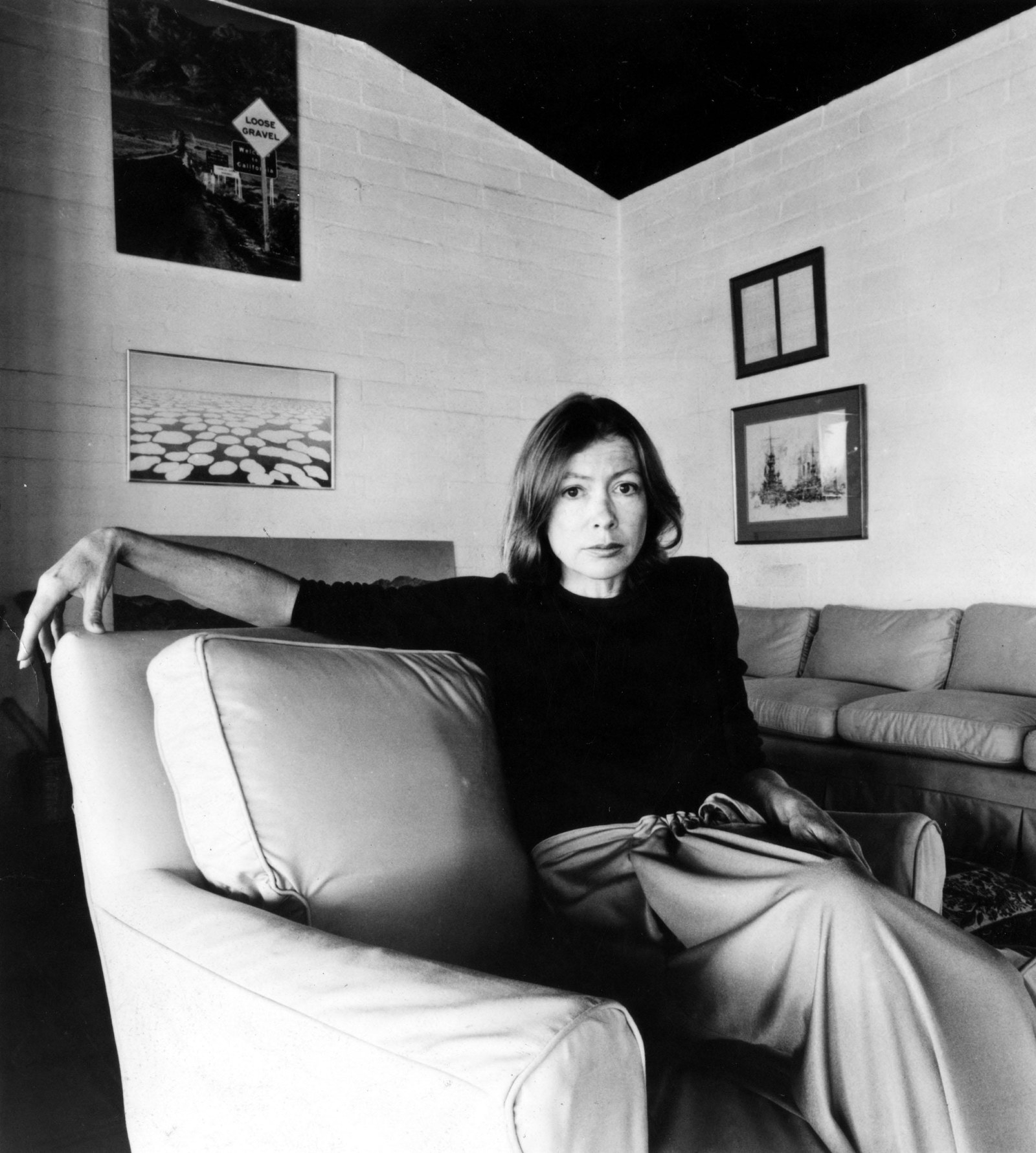
For one of the first issues of the new year, she wrote an essay the magazine entitled “Farewell to the Enchanted City.” (Later generations of readers would come to know it better by the title “Goodbye to All That.”) This was when the first hint of her career-long obsession with the stories we tell ourselves would begin to explicitly emerge. Didion suggests that the New York of her imagination had dominated the real one the whole time she actually lived there:
Some instinct, programmed by all the movies I had ever seen and all the songs I had ever heard about New York, informed me that it would never be quite the same again. In fact it never was. Some time later there was a song in the jukeboxes on the Upper East Side that went “but where is the schoolgirl who used to be me,” and if it was late enough at night I used to wonder that. I know now that almost everyone wonders something like that, sooner or later and no matter what he or she is doing, but one of the mixed blessings of being twenty and twenty-one and even twenty-three is the conviction that nothing like this, all evidence to the contrary notwithstanding, has ever happened to anyone before.
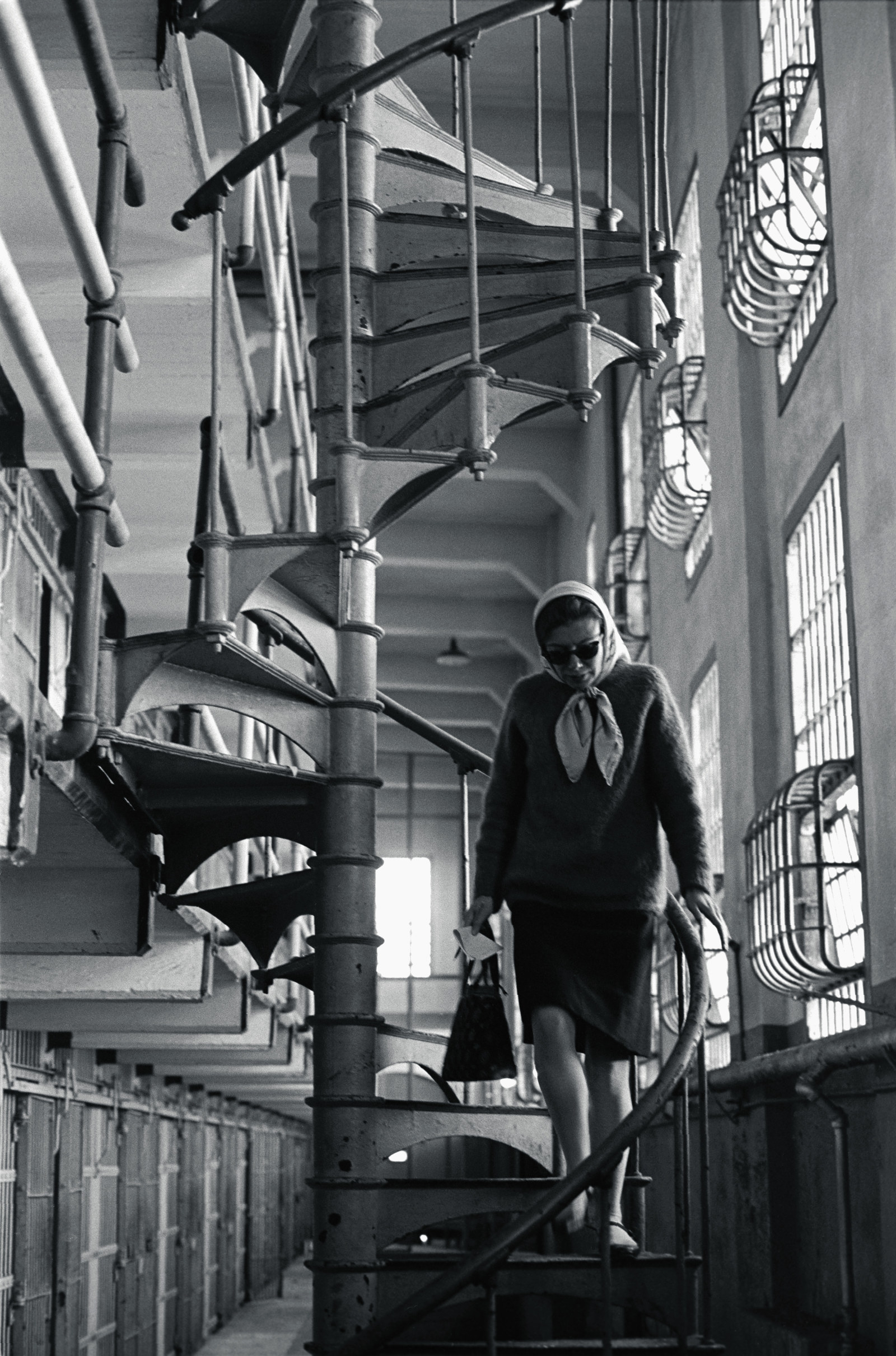
This essay is so famous it is said to have spawned its own mini genre of essays about leaving New York. Like the song on the jukebox, it expresses the feelings everyone has about a common experience. The brilliance of the essay is that even in the act of writing it Didion reenacts an emotional cliché, the narrator telling a past self how silly and stupid she was to fall for a story that everyone falls for. This self-conscious style, a personal matter conveyed at a distance, would become Didion’s signature. Even when she wrote about something as personal as her divorce, she did it at a remove, turning it over in her hand, polishing it to a shine that concealed certain roughnesses in the center.
Dunne and Didion soon had a regular column in the Saturday Evening Post, sharing a byline. It looks odd to contemporary eyes, especially because of the illustration the magazine used at the top of each column, drawings of them both. If Dunne had written the column, the illustration would show his face in front of Didion’s; if she had written it, her face would move in front of his.
Her columns were generally the more interesting explorations of the pair, her knack for inspiring a reaction was top-notch. Her essay on migraines would appear in that space, as would her reporting of a decommissioned Alcatraz and a devastating sketch of Nancy Reagan, then the first lady of California:
She has told me that the governor never wore makeup even in motion pictures and that politics is rougher than the picture business because you do not have the studio to protect you . . . “Having a pretty place to work is important to a man,” she has advised me. She has shown me the apothecary jar of hard candies she keeps filled on the governor’s desk.
Almost a month later, Nancy Reagan was still smarting from the sting, telling the Fresno Bee, “I thought we were getting along fine together. Maybe it would have been better if I snarled a bit.”
This technique—appearing to let the subject simply carry on without interruption from Didion’s evaluations or thoughts making themselves absurd—became her standard mode of operation. It would be the way she would spend large swaths of her famous explorations in Haight-Ashbury. She would begin the essay with a long incantation about how the “center was not holding,” then trek into the widening abyss to find people who would reveal themselves in a line or two. Meeting two young Deadheads, for example:
I ask a couple of girls what they do. “I just kind of come out here a lot,” one of them says. “I just sort of know the Dead,” the other says.
The flatness of these answers spoke for the emptiness of those who spoke them. Most of the readers of the Saturday Evening Post agreed with Didion on this point, the letters unusually full of praise for her insight into the barbarians of the hippie cult, as it was popular to call them at the time. There were some objectors, like Sunnie “The Daisy” Brentwood, who continued to insist that “the majority of the flower children are good kids who are trying to improve the world and make it a better place to live.”
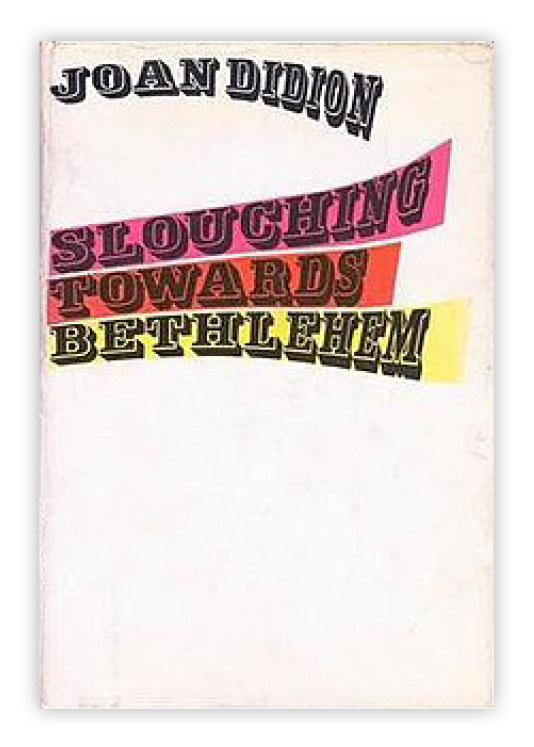
Didion’s view won out in the end, not least because this essay would become the title piece of her stand-alone 1968 collection Slouching Towards Bethlehem, the book that established Didion’s reputation. Reviewing it for the New York Times, Didion’s friend Dan Wakefield argued that Didion was “one of the least celebrated and most talented writers of my own generation.” He pointed out that Didion was easier to interpret, for example, than another trendy young woman writer of the moment named Susan Sontag. Wakefield’s thorough celebration of the book was echoed by just about every reviewer. Some of them stumbled over the pairing of Didion’s brilliance with her gender: Melvin Maddocks of the Christian Science Monitor cryptically remarked, in what appeared to be a compliment:
Journalism by women is the price the man’s world pays for having disappointed them. Here at their best are the unforgiving eye, the unforgetting ear, the concealed hat-pin style.
That is one way of looking at it; though the reference to hat pins is clearly trivializing, the notion that the opinions were a “price” rather than a gift is somewhat revealing. Didion had cultivated a persona in her writing that was just as disappointed with women—Gurley Brown, the Deadheads, Nancy Reagan, the figgy pudding domestics—as it was with the “man’s world,” wherever that was. It wasn’t feminine so much as just perceptive, sharp. Certain doors of perception are more open to women, but it doesn’t mean that men can’t see what women are pointing out, if only they’d settle down, listen, and look.
After Slouching Towards Bethlehem, the literary profilers came out of the woodwork. In droves, they began to interview her, attaching the beautiful photographs of her slight frame to headlines like “Joan Didion: Writer with Razor’s Edge,” and “Slouching Towards Joan Didion.” It was by then the 1970s. Alfred Kazin, that old friend of Hannah Arendt’s, promptly got himself assigned to fly out to California. He met the Didion-Dunnes in high spirits at the house they then occupied in Malibu, together writing a screenplay based on Play It as It Lays, her 1970 novel about a dissatisfied actress named Maria Wyeth that had gotten her rave reviews. Kazin noted the difference between the way Didion often spoke of herself in print: as fragile, ill, on the verge of divorce in a famous Life column in 1969, and the way she was in person, more a creature of sensible steel than frivolous silk:
Joan Didion is a creature of many advantages, as is clear from her own belief that she had the sense to get born and to grow up in Sacramento before so many discomfiting things began to happen to the Golden State.
Kazin continued to catalog discrepancies. Didion’s voice was “so much stronger than her own little girl’s voice!” Though the address in Malibu would seem to connote relaxation, he finds the sound of the waves below deafening: “People who live in a beach house don’t know how wary it makes them.” He called her a moralist, pointed out that she had an obsession with seriousness. He notes that always she was writing as a cultural critic, even in fiction, wanting to diagnose the ills of whatever subject she had—a propensity she shared with Mary McCarthy, though their fiction voices are far apart. He even connected her with Arendt, who had once told him that Americans seemed to despair far more than she had ever seen people do in Europe.
By the time Kazin’s profile was published, Didion was, quite simply, a star. But the Saturday Evening Post, the place that had let her write lyrically about migraines, about going home to Sacramento, or that flew her to Hawaii for a piece, had folded. She looked for other homes. Life magazine offered her a contract to write a column. But the relationship soured immediately; Didion asked to go to Saigon, because many writers—including Sontag and McCarthy—had already been there. Her editor demurred, telling her that “some of the guys are going out.” Her anger at this blithe dismissal turned into the now-famous column she wrote about visiting Hawaii during the prediction of a huge tidal wave:
My husband switches off the television set and stares out the window. I avoid his eyes, and brush the baby’s hair. In the absence of a natural disaster we are left again to our own uneasy devices. We are here on this island in the middle of the Pacific in lieu of filing for divorce.
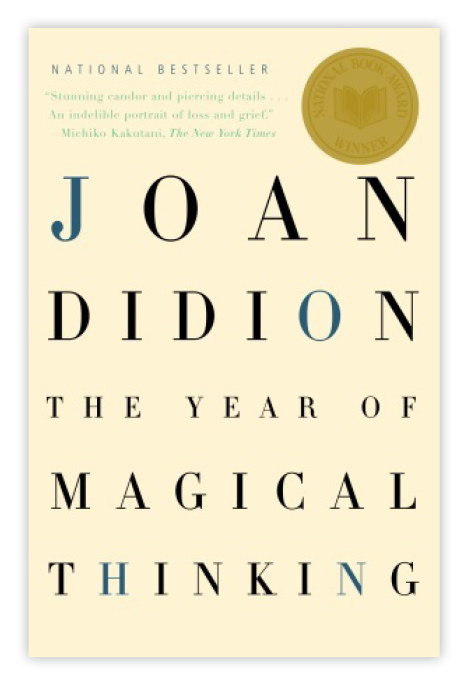
This essay poses as self-revelation, but here the frame of marital trouble dissolves. Didion begins telling you instead how disconnected she had felt from everything, how difficult it was to feel. She confesses that she has become, as that old boyfriend predicted, someone who feels nothing. The piece is so relentlessly dark and despairing it is no wonder the Life editors were apparently startled by it. They gave it a title that reflected their bewilderment: “A Problem of Making Connections.” Subsequent deeply personal columns were not to their taste either, and Didion would end up relinquishing the contract before it was up because the editors would not run her column. She would get back at the editor for his nonchalant remark many years later, when she’d report it in The Year of Magical Thinking.
This hints at something important about Didion’s work: even when she is reporting unendurable despair, feeling that her life is falling apart alongside the country’s, another engine is at work there. No person as depressed and lost as Didion purports to be could possibly draft prose this precise, words that cut so directly to the heart of her subject. In the case of the confession of her potential divorce, the engine behind it was anger, anger at having been prevented from using the full measure of her powers by an editor who considered Joan Didion less daring a writer than the “guys” going out to Saigon. It was a mistake that belongs in the museum of poor editorial decisions.
Didion returned to novel writing. She occasionally contributed to Esquire, but had trouble fitting in there too. She was one of the boys, clearly, in the sense that men had noticed her writing and wanted to publish her. But she also couldn’t quite fit into their regime.
Still, turning to the women’s magazines would have been intolerable for her, just when the women’s liberation movement was at its height. Like Sontag, she was no doubt being asked about her loyalty to the consciousness-raising circles that were suddenly everywhere. But she does not seem to have directly commented until finally, in 1972, she published an essay called “The Women’s Movement” in the pages of the New York Times. She listed sixteen books as inspiration. But she had clearly been moved to frustration by the “special issue on women” that Time had published some months before.
Didion was not willing to grant much ground or sense to the nascent second wave of feminism. She leveled some of the most direct insults of her career at it. “It seemed very New England, this febrile and cerebral passion,” she said of the radical feminist writings of Shulamith Firestone. She referred to some of the movement’s methods as Stalinist, singling out the British writer Juliet Mitchell’s relation of Maoist practice to the consciousness-raising session. She also defended Mary McCarthy from those feminist theorists who would deconstruct her heroines in The Company She Keeps and The Group into an unrecognizable, overly politicized caricature: “enslaved because she persists in looking for her identity in a man.”

Yet there was something less than a total rejection of the notion of feminism going on in Didion’s article. She presented herself as merely worried that what she sweepingly saw as one unified movement had become mired in arguments over trivial issues, like the division of domestic duties such as washing the dishes.
Of course this litany of trivia was crucial to the movement in the beginning, a key technique in the politicizing of women who perhaps had been conditioned to obscure their resentments even from themselves . . . But such discoveries could be of no use at all if one refused to perceive the larger point, failed to make that inductive leap from the personal to the political.
Didion also thought that in their books the feminists had constructed a kind of self-delusion, one she called Everywoman, “persecuted even by her gynecologist,” “raped on every date.” Didion did not deny that women were victims of condescension and sex-role stereotyping. Indeed, it’s hard to imagine how she could, given the way she was written about in the period, given her inability to fit tidily into the male-dominated magazine world. But she found the expressed wishes of the main movement writers to be childish in the extreme. “These are converts who want not a revolution but ‘romance,’” she concluded.
Didion had addressed the condition of women several times before, often in the context of writing about Doris Lessing. She wrote about her twice: once for Vogue and once for the New York Times Book Review. In Vogue, she’d had only enough space to say she did not share Lessing’s view that there was some “injustice” involved in being a woman. By the time Didion was enlisted to review the science fiction novel Briefing for a Descent into Hell, she had softened her view of Lessing, in part because Lessing had softened her view of feminist politics by then. Briefing, which as Lessing termed it, was an “inner space fiction,” was more about madness and alienation than about a critique of modern social structures. And while Didion didn’t particularly like it, she went out of her way to congratulate Lessing on what she saw as Lessing’s disenchantment with all blunt forms of political thought and action, as Didion saw feminism to be:
The impulse to find solutions has been not only her dilemma but the guiding delusion of her time. It is not an impulse I hold high, but there is something finally very moving about Mrs. Lessing’s tenacity.
There’s a little daylight between Didion and her rejection of feminism, here. It seemed, in a cloaked way, that she had some sympathy for the aims and hopes of those feminists whose tactics and writing she still detested. It was not much, but it was something.
This is something that could not really be said for the other side. Several feminist activists wrote to the Times to complain, among them Susan Brownmiller, whose Against Our Will had been listed as one of the books examined in the essay. Pointing out that Didion had never exactly positioned herself as a leftist, and had written for the National Review, Brownmiller cryptically continued:
Isn’t it interesting that the real toughies are always on the other side? I’ll take boots and blue jeans over manicured, Mandarin fingernails any day of the week.
The piece would cut Didion forever out of the women’s movement. In fact, it inaugurated a common complaint about her: that she was, in her own way, acting out a certain kind of stereotypical femininity. And for all her defense of complexity, she was afraid to recognize that there were any number of interior ideological fights going on in the movement she was describing: the novelist Alix Kates Shulman was on one side of the fence, and the tract-writer Shulamith Firestone on another. But in Didion’s view they were all the same, all the Everywoman, all capable of making different choices from the ones they had made.
For the rest of the 1970s, Didion mostly threw herself into film-making and fiction. She and Dunne would work on a film version of Play It as It Lays, as well as an update of A Star Is Born. She published A Book of Common Prayer. She had the occasional article in Esquire, but her energy seemed subdued. The Didion-Dunnes, who had avoided divorce more than once in the intervening years, were great party givers, and that took up time too. It wouldn’t be until the end of the decade that she’d publish a second collection of nonfiction called The White Album.
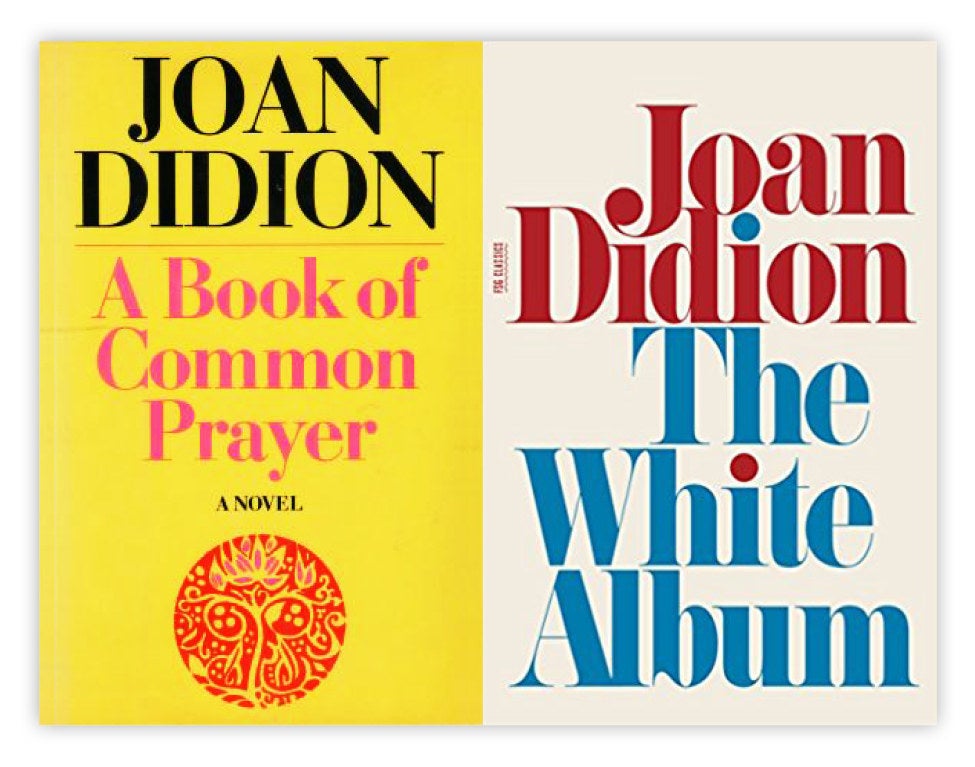
The title essay, “The White Album,” which begins with the famous incantation, “We tell ourselves stories in order to live,” is a fragmentary bit of work. Though that first line is often quoted as a kind of self-help mantra, in the essay proper Didion goes on to list delusional fantasies, finally concluding that writers especially are guilty of imposing a kind of narrative order on existence that simply “freeze[s] the shifting phantasmagoria of our experience.”
Some of the elements of the essay included projects that Didion had tried to take up, and which had failed, over the years. Specifically, she mentions an acquaintance with Linda Kasabian, the twenty-three-year-old member of the Manson family who had driven the car when a group of them murdered Sharon Tate and her houseguests in August 1969.
On the outside, the Kasabian story had looked like a perfect Didion subject. Here was a person who had gotten caught up in the promises of love and grooviness that were the allure of the hippie movement—the promises that, as Didion had written, at length, were bogus. Kasabian had gone so far that she got caught up in the most notorious murders in America, murders so savage they stood out in a country that treated crime as nighttime entertainment. But Didion never got the project under way. Instead the Manson murders, and Linda Kasabian, became another dreamlike element in the political and social morass of the late 1960s, years when Didion would write that she barely knew her own mind:
I remember all the day’s misinformation very clearly, and I also remember this, and wish I did not. I remember that no one was surprised.
In The White Album, Didion never says what shook her out of her misery at the morally and philosophically empty conditions of the 1960s, not exactly. It could have been the films she was making, or that she was finally being recognized as a proper novelist. A Book of Common Prayer was very well received. It could be that without the violence and anomie of the 1960s, she found herself enjoying life suddenly. Quintana was growing up, her marriage got past its rough point, and she was making good money.

It was in the 1970s that she got very lucky. She met an editor who, like her old ones at the Saturday Evening Post, was prepared to let her talent work for itself in nonfiction articles. Bob Silvers, who was now one of the two lead editors of the New York Review of Books, was happy to let Didion roam over the pages of the magazine. Her first piece was nominally a review of Stanley Kauffmann’s film criticism in the New Republic, though Didion had other targets in mind:
I used to wonder how Pauline Kael, say, could slip in and out of such airy subordinate clauses as “now that the studios are collapsing,” or how she could so misread the labyrinthine propriety of Industry evenings as to characterize “Hollywood wives” as women “whose jaws get a hard set from the nights when they sit soberly at parties waiting to take their sloshed geniuses home.”
Didion proceeded to mock those, like Kael and Kauffmann, who wrote about film without having any idea how a film was produced and made. She said the most they could hope for was to bring a specific brand of intelligence to film, but that it was “a kind of petit-point-on-Kleenex effect which rarely stands much scrutiny.”
Kauffmann, upon reading the review, discovered that in fact he was little-mentioned in it, and that four of the quotes Didion used had come from an entirely different book he had written. He wrote in to the New York Review to state his objection, and added:
A possible reason: In the December 9, 1972, issue of the New Republic, I reviewed Miss Didion’s film Play It as It Lays, referred to her novel of that name, and stated my utter loathing of both. (On much the same grounds that she substantiates in her article: the film pretended to deal with serious subjects but was patently an industry product.) Perhaps Miss Didion would dislike my writing just as much if I had praised her work. I hope so. But your readers might care to know about a possible tit for tat.
Didion was typically cutting in reply. Had he reviewed her work positively, she insisted, she would still dislike his work, and “I would also have some doubts about my own.”
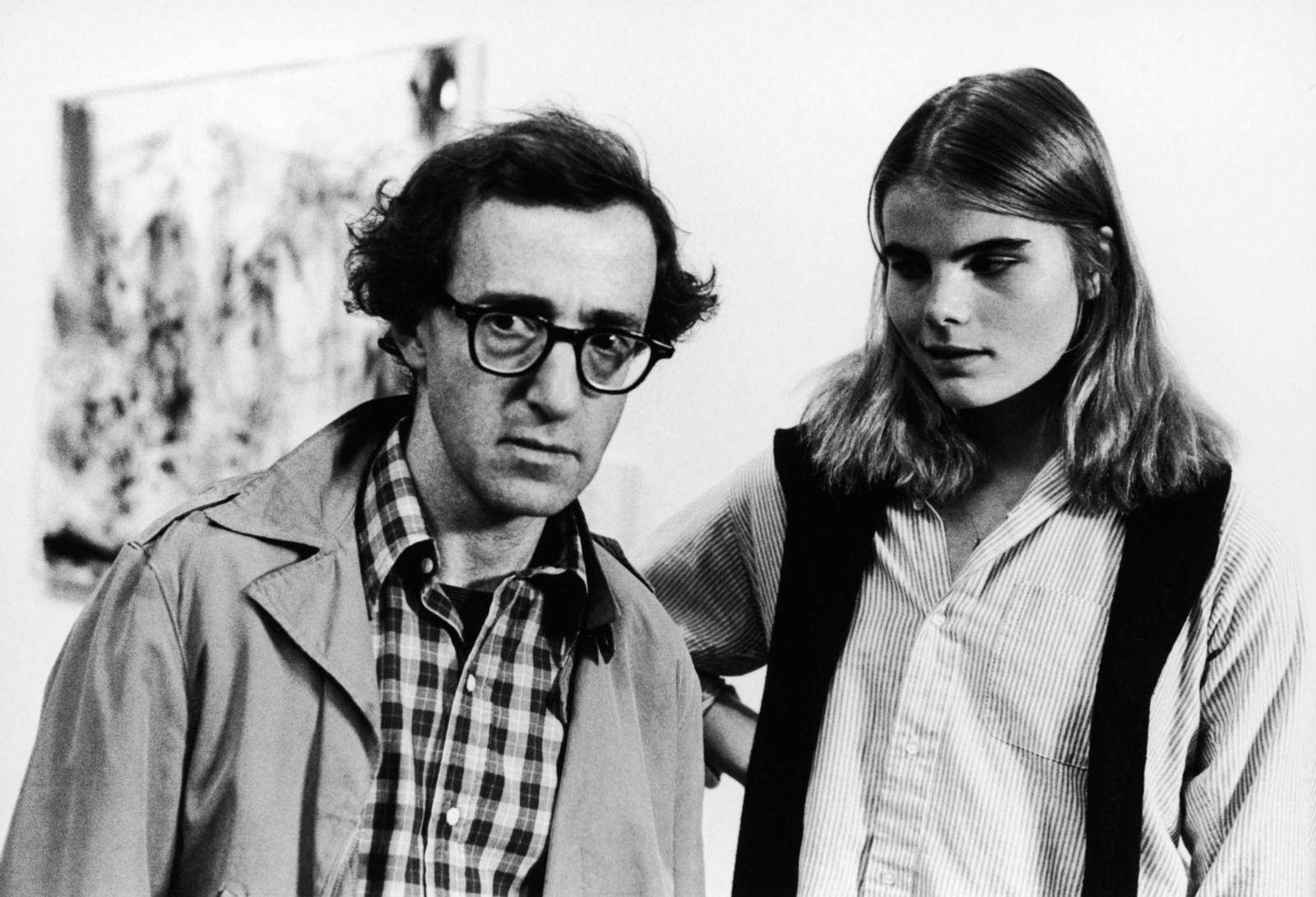
“Self-absorption is general, as is self-doubt,” she’d memorably begin that Woody Allen piece. Her complaints about Allen were pretty much the same ones she’d voiced eighteen years before about J. D. Salinger. Allen’s characters were “clever children,” who spoke in smart remarks that no serious adult could sustain as easily. They were obsessed with trivialities when they listed among their reasons to live Willie Mays and Louis Armstrong:
This list of Woody Allen’s is the ultimate consumer report, and the extent to which it has been quoted approvingly suggests a new class in America, a sub world of people rigid with apprehension that they will die wearing the wrong sneaker, naming the wrong symphony, preferring Madame Bovary.
She called out the one character in Manhattan who is in high school. That was Mariel Hemingway’s Tracy, a character drawn in what Didion terms “another adolescent fantasy.” She found Tracy too utterly perfect, and with no real family to hold her back from dating Allen’s forty-year-old neurotic. A man wrote in to object, at length, to the way Didion had disrespected what was obviously his favorite filmmaker. Her reply? “Oh, wow.” ●
Excerpted from SHARP: THE WOMEN WHO MADE AN ART OF HAVING AN
OPINION copyright © 2018 by Michelle Dean. Reprinted with the permission of the
publisher, Grove Press, an imprint of Grove Atlantic, Inc. All rights reserved.
Copyright © 2018 by Michelle Dean, extracted from SHARP, published in the UK & British Commonwealth by Fleet, an imprint of Little, Brown Book Group Limited at £20.00 on 3rd May 2018.
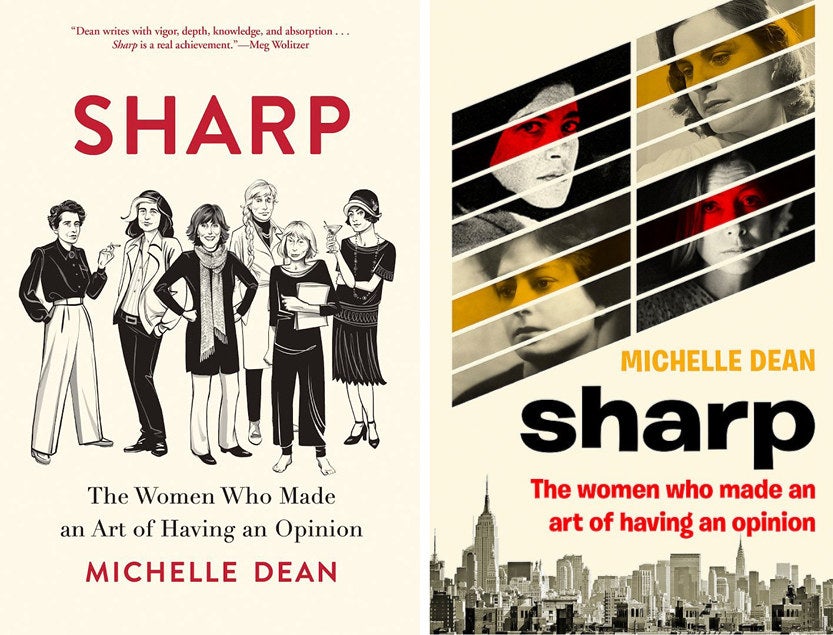
Michelle Dean is a journalist, critic, and the recipient of the National Book Critics Circle’s 2016 Nona Balakian Citation for Excellence in Reviewing. A contributing editor at the New Republic, she has written for the New Yorker, Nation, New York Times Magazine, Slate, New York Magazine, Elle, Harper’s, and BuzzFeed. She lives in Los Angeles.
Here is more information about Sharp.
